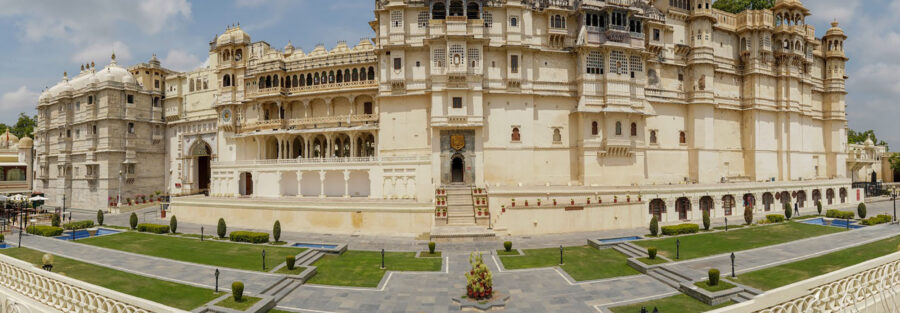Rajput architecture refers to the architectural style developed and nurtured by the Rajput rulers and their clans in the region of present-day northern India, particularly Rajasthan, during various periods of history. Rajput architecture is a rich blend of indigenous Indian styles, with influences from Islamic and Persian architecture. It showcases the Rajput ethos, culture, and valor, often integrating Hindu and Jain themes into its design.
The history of Rajput architecture can be broadly divided into several periods:
Early Period (8th to 12th Century): The earliest Rajput architecture can be seen in the hill forts, temples, and stepwells (baoris) that were built during this period. These structures, often carved into rocky terrain, displayed simple yet elegant designs and intricate carvings. Prominent examples include the Chittorgarh Fort and the group of temples at Osian.
Medieval Period (12th to 16th Century): During this period, Rajput architecture flourished with the rise of various Rajput kingdoms. Mewar, Marwar, Amber, and other states built majestic forts, palaces, temples, and havelis (traditional mansions). The development of techniques like jali (lattice work) and chajja (projecting eaves) became prominent during this time. Notable structures include the Mehrangarh Fort in Jodhpur and the Amber Fort in Jaipur.
Mughal Influence (16th to 19th Century): With the Mughal influence spreading across India, Rajput architecture saw a fusion of Islamic and Persian elements. The Rajputs adapted these styles while maintaining their distinct identity. The Hawa Mahal (Palace of Winds) in Jaipur is a prime example of this period, featuring ornate jalis and chhatris (domed pavilions).
Colonial Era (19th Century): During British colonial rule, Rajput architecture continued to evolve, but there was a shift towards integrating European elements into traditional designs. Some palaces and havelis began to adopt neoclassical elements while maintaining Rajput aesthetics.
Modern Period (20th Century onwards): The architectural style of Rajasthan evolved further in the 20th century, with influences from Art Deco, Art Nouveau, and other modern architectural trends. While contemporary structures in Rajasthan often reflect global architectural sensibilities, traditional elements and motifs are still incorporated into design.
Key features of Rajput architecture include intricately carved facades, decorative arches, domes, minarets, ornate jalis, chhatris, and frescoes. Temples often feature mandapas (hall), garbhagriha (sanctum), and shikharas (spires). Forts are characterized by their high walls, battlements, and strong defensive structures.
In summary, the history of Rajput architecture spans centuries and reflects the dynamic cultural and historical landscape of northern India. The architecture is a testament to the Rajputs’ creativity, valor, and their ability to fuse diverse influences into a distinctive architectural style that stands as a significant part of India’s architectural heritage.



